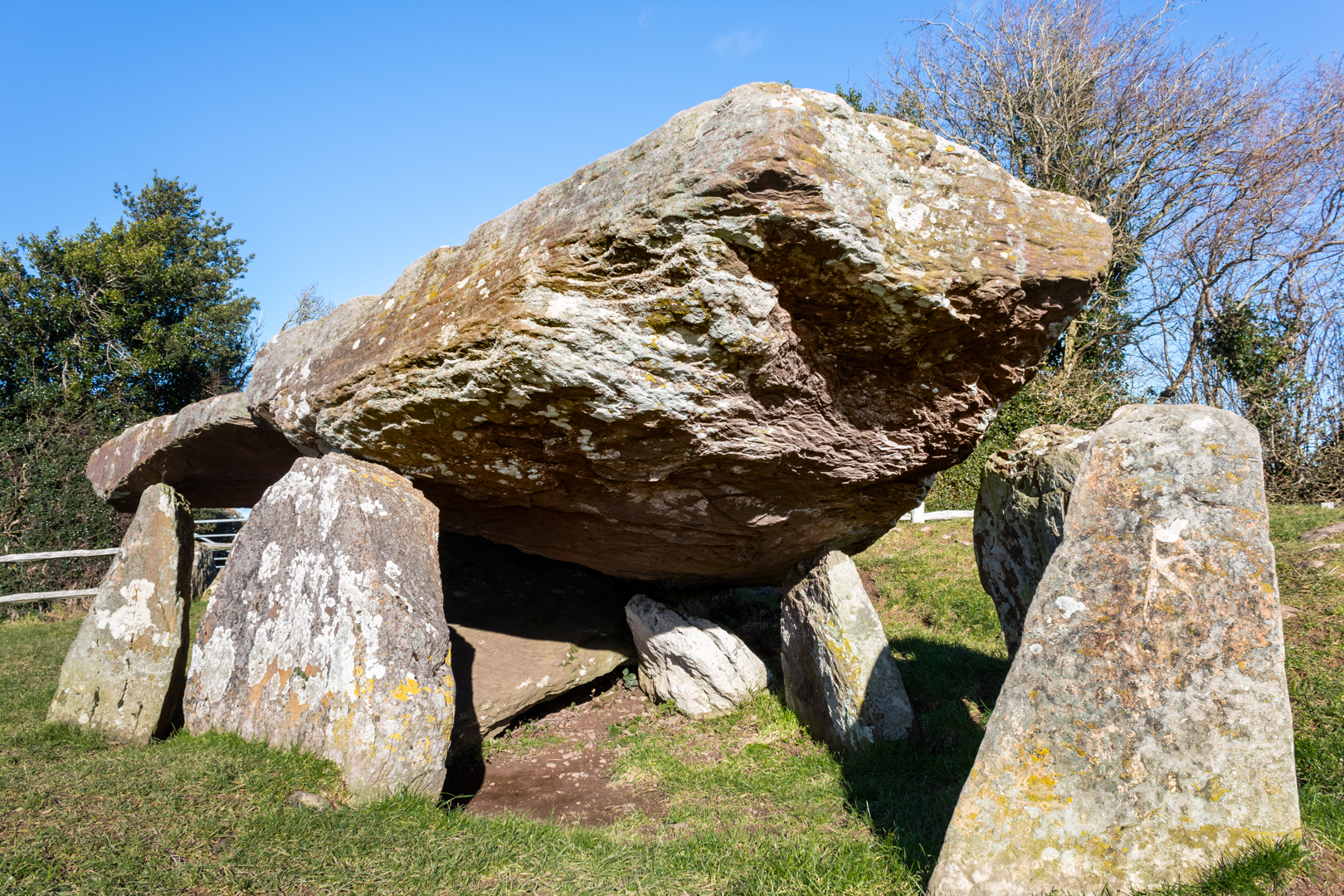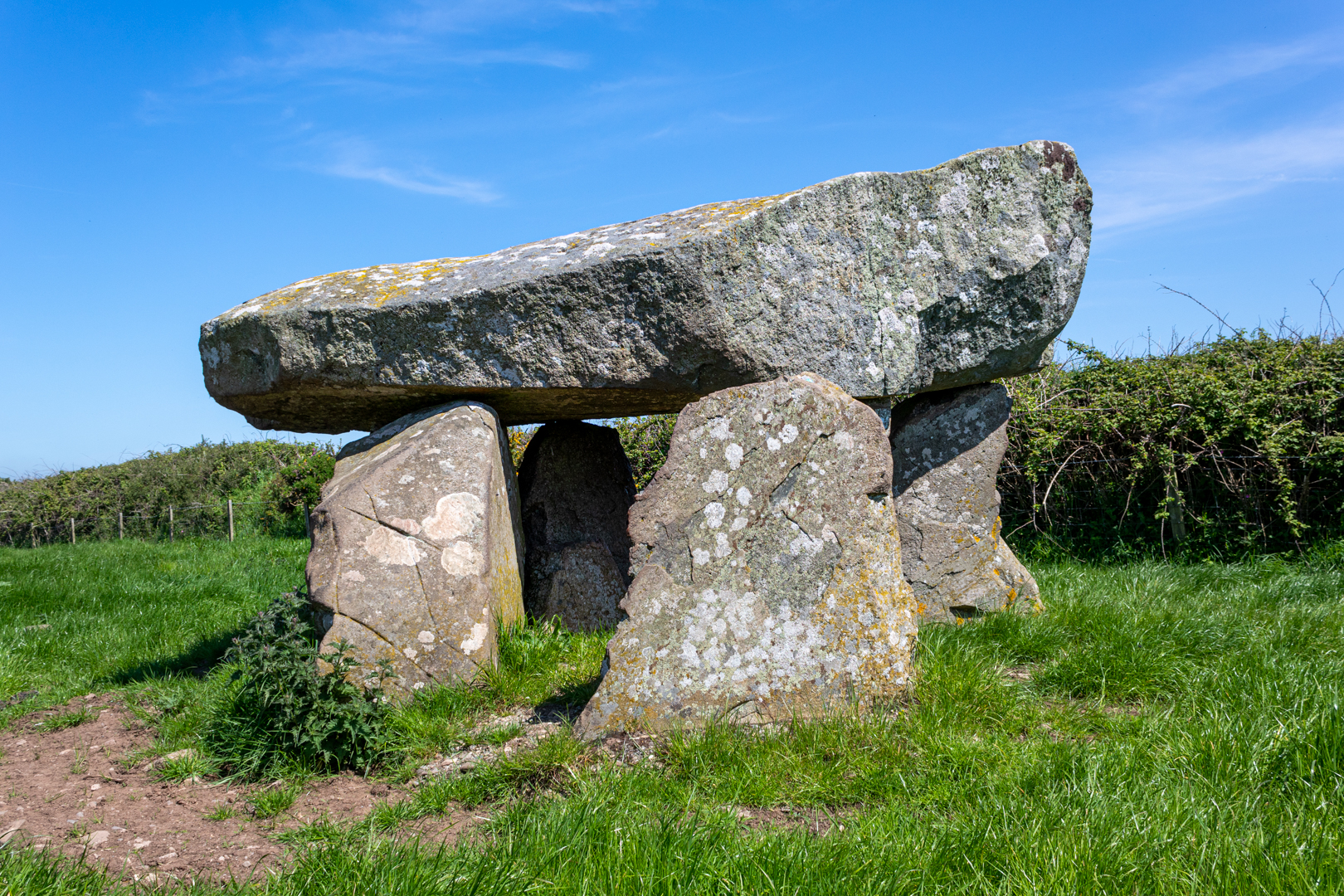Harold's Stones
In the village of Trellech, three megaliths stand. The village likely got its name from these stones, translating to either 'village of stones' or 'three stones.' The name derives from 'tri' (Welsh for three) and 'llech' (meaning flat stone).
Visit Date January 2025
 |
| Harold's Stones : Trellech |
These three large standing stones in a 12-metre alignment, all three are leaning at angles but it is unlikely that this is deliberate.
 |
| Harold's Stones : Trellech |
Although a relatively small village in modern times, Trellech in Monmouthshire was one of the largest towns in Wales in the 13th century.
Harold's stones are in a 12-metre alignment with a possible fourth stone being robbed away or destroyed in the late 18th century. The stones are of a conglomerate rock that's known as pudding stone. All the stones lean at different angles with the tallest being over 4 metres in height.
 |
| Harold's Stones : Trellech |
A font in the local church has a carving of the stones with the stones numbered 8, 10 and 14 which is thought to be the height of each stone at that time.
The precise reason for the erection of the stones is unknown however, they may have been for ritual, though an astronomical use is not out of the question.
The stones create an approximate line running between the north-east and south-west at an azimuth of about 229°, likely indicating the midwinter sunset, although the possibility of the midsummer sunrise cannot be dismissed due to the imprecise alignment today due to the movement.
The central stone of the three has been dressed to smooth its surface and bears two large cup marks on its face.
 |
| Harold's Stones : Trellech |
There is much folklore associated with the stones.
The origin of the name "Harold's Stones" remains a mystery. Local legend suggests that these stones were erected to commemorate the victory of the Saxon king Harold over the Britons. However, this theory is unlikely, as the stones date back at least 2,000 years before Harold's time. Another legend claims that they mark the location where three British chieftains fell in battle against Harold. Despite being associated with Harold's victory over the Britons, the stones are much older than that.
 |
| Click on any image for a larger version |
The location of this event varies depending on who tells the story. Some versions claim that the competition took place on Sugar Loaf Mountain, while a third version cites Skirrid Fawr, also known as Holy Mountain, as the site of the contest.
Footer:Visit Information: -
Google Reference: -
51.74277538693781, -2.7265470451085365
What Three Words reference: -
///jeep.pylon.streetcar
OS Details: -
OS Grid Ref: SO 49927 05145 Elevation: 206 m
Google Reference: -
51.74277538693781, -2.7265470451085365
What Three Words reference: -
///jeep.pylon.streetcar
OS Details: -
OS Grid Ref: SO 49927 05145 Elevation: 206 m
Additional information.
Visiting is easy and there is a public car park close to the site (51.74405088914131, -2.7246217913570847) There is just a short walk along the road to the site however, this has no pavement so care will be needed. The site is marked with a monument sign.
There are no facilities at the site but there is a pub in the village and also you may be lucky enough to have tea in the village hall!
A full list of blogs can be found at my website



































